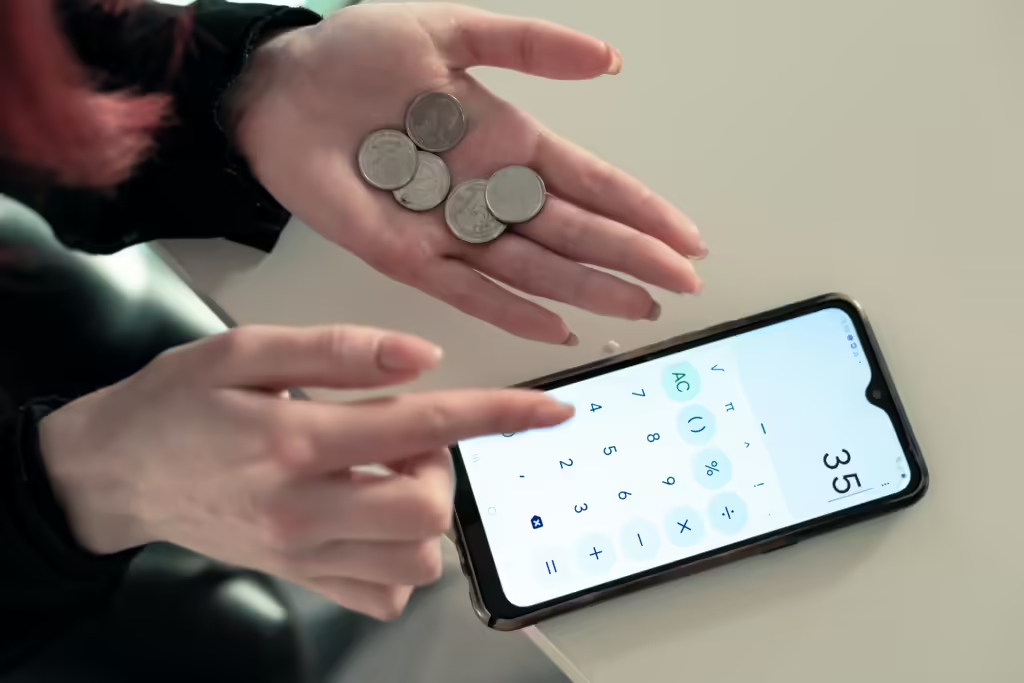What's Lacking In Current Fintech? How Can Design Solve?

Bridging the Gap: How Design Can Revolutionize Fintech for Everyone
Fintech, a marriage of finance and technology, has undeniably transformed the financial landscape. From mobile banking apps to robo-advisors, these innovations have streamlined financial processes, democratized access to financial services, and empowered individuals to take control of their financial well-being. However, despite its rapid growth, the current fintech landscape still faces some shortcomings. By applying design thinking principles, these gaps can be bridged, creating a more inclusive and user-centric financial experience for everyone.

The Friction of Onboarding
One of the biggest hurdles for fintech products is the onboarding process. Lengthy sign-up procedures with complex forms and unclear instructions can discourage users, particularly those new to the world of digital finance. Statistic: A study by App Annie revealed that fintech app abandonment rates can reach up to 70% due to complex onboarding processes.
Design Solution: Design thinking prioritizes user experience at every touchpoint. Streamlining onboarding can significantly improve user experience and encourage completion. Here’s how design can help:
- Minimize Steps: Break down the sign-up process into smaller, manageable steps. For example, allow users to connect their existing social media accounts or utilize pre-filled forms based on publicly available data (with user consent) to reduce manual data entry.
- Clear Instructions: Use simple language with clear instructions for each step of the process. Consider incorporating visual cues like icons and tooltips to further guide users.
- Progress Bars: Implement progress bars to provide users with a visual representation of their progress throughout the onboarding journey, fostering a sense of accomplishment and encouraging them to complete the process.
A Deluge of Data, A Deficit of Understanding:
Fintech apps often overwhelm users with complex financial data and charts. While transparency is crucial, users might struggle to interpret this information and make informed decisions. Statistic: Only 34% of Americans feel confident making financial decisions, according to the FINRA Investor Education Foundation (2022).

Design Solution: Data visualization tools can empower users to understand their financial situation and make informed choices. Here’s how design can bridge the data gap:
- Interactive Dashboards: Design personalized dashboards that allow users to customize the information displayed based on their needs. This gives users control over the data they see and promotes engagement.
- Actionable Insights: Don’t just present data; translate it into actionable insights. Highlight trends, predict future balances, and offer personalized recommendations using clear and concise language.
- Data Simplification: Avoid overwhelming users with financial jargon. Use simple language, explain complex terms within the app itself, and consider offering a glossary of financial terms for easy reference.
The Security Paradox: Balancing Protection with Convenience
Security is paramount when dealing with finances. However, overly complex authentication methods can frustrate users and hinder app usage. Statistic: A 2023 study revealed that 42% of consumers are hesitant to use fingerprint or facial recognition for financial transactions due to security worries (PwC).

Design Solution: Striking a balance between security and convenience is crucial. Design thinking can help implement user-friendly authentication methods while prioritizing security. Here are some approaches:
- Risk-Based Authentication: Implement a risk-based authentication system that adapts to the level of transaction risk. For low-risk transactions, consider fingerprint or facial recognition. For high-risk transactions, a combination of methods like one-time passwords (OTPs) might be appropriate.
- Biometric Education: Educate users on the security measures implemented within the app and how biometric data is protected. This fosters trust and encourages users to adopt these convenient authentication methods.
- Multi-Factor Opt-In: Allow users to choose their preferred authentication methods from a range of secure options. This empowers users and gives them control over their security preferences.
Beyond the App: Breaking Down Siloed Services
Many fintech apps operate in isolation, limiting users’ ability to manage their finances holistically. This fragmented approach forces users to toggle between multiple apps for different financial needs, hindering a comprehensive view of their financial health.
Design Solution: Open banking APIs can be leveraged to integrate various financial services within a single app. This creates a one-stop financial hub for users. Here’s how design can create a unified experience:
- Account Aggregation: Enable users to connect their bank accounts, investment portfolios, and credit cards within the app. This provides a consolidated view of their finances, eliminating the need to switch between multiple apps.
- Seamless Integration: Design a seamless user experience for transactions and functionalities across different integrated services. Users should be able to transfer funds, invest their savings, and pay bills, all within the same platform.
- Contextual Recommendations: Leverage user data and financial context to offer relevant recommendations for services within the app. For example, suggest specific investment options based on risk tolerance or recommend a budgeting tool based on spending habits.
Financial Inclusion: Bridging the Digital Divide
Despite the surge in fintech adoption, a significant portion of the global population remains unbanked or underbanked. These individuals often lack access to traditional banking services or the digital literacy required to navigate fintech platforms. Statistic: Globally, 1.7 billion adults remain unbanked (World Bank, 2021).
Design Solution: Inclusive design principles are crucial for reaching the underbanked population. Here’s how design can bridge the digital divide:
- Simplified Interfaces: Prioritize user-friendly interfaces with minimal text and large, universally understood icons. Consider offering the app in multiple regional languages to cater to diverse populations.
- Offline Functionality: Enable basic functionalities like balance checks, bill payment initiation (which can be processed later when online), and transaction history even in offline mode. This is crucial for users in areas with limited internet access.
- Local Partnerships: Partner with local retailers (kirana stores) and agents to offer cash-in/cash-out services, bill payment points, and provide basic customer support in person. This not only increases accessibility but also builds trust within the community.
The Power of Design: A User-Centric Approach

By applying design thinking principles, fintech companies can transform the user experience and address the shortcomings mentioned above. Design thinking emphasizes understanding user needs, pain points, and aspirations. By incorporating user research and iterative testing throughout the development process, fintech products can evolve to be more user-friendly, accessible, and ultimately, more successful.
Here are some additional ways design can revolutionize the future of fintech:
- Gamification: Leveraging game mechanics like points, badges, and leaderboards can incentivize positive financial behaviors like saving, budgeting, and investing. For example, a micro-savings app could reward users with badges for reaching savings goals or completing financial literacy quizzes.
- Behavioral Science: Understanding how our minds work can be harnessed to create engaging and effective financial tools. For instance, leveraging the “fear of missing out” (FOMO) with timely investment alerts or nudging users towards automatic savings goals can promote positive financial habits.
- Personalized Experiences: Tailoring the user experience based on individual financial goals, risk tolerance, and financial literacy levels can enhance user engagement and promote financial wellness. An app could offer personalized budgeting templates, suggest investment options based on risk profiles, and provide educational resources based on a user’s financial knowledge level.
Design thinking holds immense potential to transform the fintech landscape. By prioritizing user needs, simplifying complex functionalities, and fostering financial inclusion, design can create a more user-centric and empowering financial experience for everyone. As fintech continues to evolve, embracing a human-centered design approach will be paramount in ensuring its success and democratizing access to a secure and prosperous financial future.


